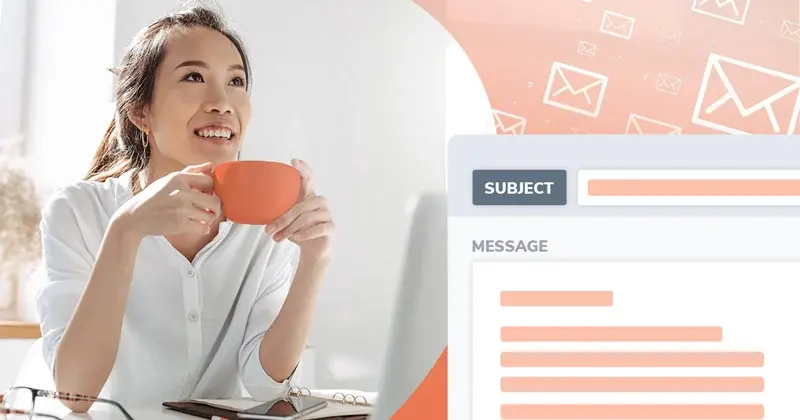When chasing overdue payments, the way you craft your collections emails can impact not only the likelihood of receiving timely payments but also the strength of your relationship with clients.
Finance professionals, accountants, and bookkeepers know that the linchpin of enhancing recovery rates lies in good communication. These emails serve as the frontline in the effort to recover outstanding debts while maintaining positive client relationships.
This guide will explore the strategies for crafting impactful collections emails that enhance recovery rates while upholding the integrity of your client partnerships.
Understanding (and remembering) the purpose of collections emails
Collections emails go beyond just reminders for overdue invoices. They serve as gentle nudges (not aggressive pokes) to prompt clients to commit to their financial obligations while keeping professionalism and friendliness intact.
The above is especially true when you know payments can become overdue for several reasons – not always because a client intentionally avoids paying.
Sometimes, they might experience temporary financial issues, making it hard to settle their bills right away. Unexpected life events, such as losing a job or dealing with an illness, can also make it harder for people to keep up with payments. While intentional delays do happen, as when someone's unhappy with what they received, it's often just a matter of forgetfulness or overlooking the due date.
Whether the specific situation requires a simple reminder or a firm request for payment, the tone and content of collections emails can significantly impact your recovery efforts.
The types of collections emails
The existing types of collections emails are typically variations of the following:
- The proactive payment reminder, which notifies clients about an upcoming invoice due date to encourage timely payment.
- The early-payment discount reminder, which reminds clients of an upcoming invoice due date and offers a discount for paying early.
- The past-due reminder, which lets clients know their invoice is overdue and prompts them to make payment.
- The second past-due reminder, which ends a follow-up reminder, stressing the urgency of the overdue payment.
- The suspension of credit, which informs clients that credit privileges are suspended due to an unpaid balance.
- The default on payment commitment, which tells clients they failed to meet a payment commitment and prompts action.
- And finally, an escalation notice, which warns clients of further action if they don't make the payment right away. Hopefully, it doesn't get to that point.
Of course, the types, frequency, and conventions of collection emails can vary widely between companies. Factors like the industry they operate in, their business model, and internal policies all play a role in shaping their approach.
Think, for example, about a company that relies on regular subscription payments. They might use early-payment discounts to keep the money coming in and prevent customers from leaving. On the other hand, you've got companies with different customers and payment histories. They might try different kinds of reminder emails depending on how late the payment is.
It's also not uncommon for businesses or creditors to send a third past-due reminder if earlier reminders haven't led to a response or payment. This practice gives creditors a chance to show they're actively trying to resolve the issue and gives debtors more opportunities to catch up on late payments before things escalate.
The key components of effective collections emails
Crafting effective collections emails requires attention to detail and a keen understanding of persuasive communication. These two pillars are included in the following components:
- Clear subject lines. Clear subject lines help the recipient quickly grasp what the email is about. When the subject line is straightforward, it makes it more likely that the recipient will open the email.
- Personalized salutations. Using personalized salutations adds a friendly touch to the email. When the recipient sees their name at the top, it feels more personal and engaging. It shows that you, as the sender, took the time to address them specifically, which can make the recipient feel valued.
- Concise yet informative content. It's important to keep the content of the email short and to the point. When the message is concise, it's easier for the recipient to understand what you're trying to say. By providing just the right amount of information, you can avoid overwhelming the recipient and keep their attention focused on the key points.
By striking the right balance between urgency and professionalism, you can effectively convey the importance of prompt payment without alienating clients.
Structuring collections emails for maximum impact
The structure of your collections emails plays a crucial role in capturing the recipient's attention and guiding them towards action.
By using bullet points, numbered lists, and strategic formatting, you can improve readability and comprehension. Also, be sure to include relevant invoice details, payment options, and clear call-to-action prompts. These tactics ensure that recipients know exactly what's expected of them and how to proceed – without thinking twice.
Quick templates you can use as a jumping-off point
The following email templates act as a base to polite and well-worded collections emails. They may sound too formal for some companies and strike the right tone for others. Just know that they're a foundation for what to say and not necessarily how to say it.
The proactive payment reminder
Subject: [Client's Name], Your invoice is due soon!
Body: Hello [Client's Name], We hope this email finds you well. We wanted to remind you that Invoice #[Invoice Number] is due in [Number of Days].
Please ensure that payment is processed by [Due Date] to avoid any inconvenience. If you have any questions or need assistance, feel free to reach out to us. Thank you for your attention.
Best regards,
[Your Name]
The early-payment discount reminder
Subject: [Client's Name], Take advantage of early-payment discount!
Body: Hello [Client's Name], We hope you're doing well. Just a quick reminder that if you make payment for Invoice #[Invoice Number] by [Early-Payment Discount Deadline], you'll be eligible for a [Discount Percentage]% discount on your total bill. Don't miss out on this opportunity to save! Please let us know if you have any questions or need assistance.
Best regards,
[Your Name]
The first past-due reminder
Subject:[ Client's Name],The payment for invoice #[Invoice Number] is overdue
Body: Hello [Client's Name], We hope this email finds you well. We wanted to bring to your attention that payment for Invoice #[Invoice Number] was due on [Due Date] and is now [Number of Days] past due. If you have any concerns or need to discuss payment arrangements, please don't hesitate to contact us.
Best regards,
[Your Name]
The second past-due reminder
Subject: Urgent: Payment for invoice #[Invoice Number] is now [Number of Days] past due
Body: Hello [Client's Name], We hope you're doing well. This is a follow-up to our previous email regarding Invoice #[Invoice Number], which remains unpaid. As of today, the invoice is [Number of Days] days past due, and we kindly request your immediate attention to this matter. Failure to make payment may result in further action being taken to recover the debt. Please contact us to resolve this issue.
Best regards,
[Your Name]
The suspension of credit
Subject: Important: Suspension of credit on your account
Body: Hello [Client's Name], We regret to inform you that due to the outstanding balance on your account, we have suspended further credit privileges until the overdue amount is settled. This action is necessary to ensure the integrity of our credit policies. Please make payment as soon as possible to restore your credit privileges. If you need assistance or have any questions, please reach out to us immediately.
Best regards,
[Your Name]
The default on payment commitment
Subject: [Client's Name], This is a notice of default on payment commitment
Body: Hello [Client's Name], We regret to inform you that despite our previous reminders and attempts to work out a payment arrangement, we have not received the agreed-upon payment for Invoice #[Invoice Number]. As a result, we consider you to be in default on your payment commitment. Please contact us urgently to discuss resolving this matter and preventing further escalation.
Best regards,
[Your Name]
The escalation notice
Subject: Immediate action required: Escalation notice for unpaid invoice #[Invoice Number]
Body: Hello [Client's Name], This is to inform you that despite our repeated attempts to resolve the outstanding balance on Invoice #[Invoice Number], we have not received payment. If payment is not received within [Number of Days], we will be forced to take further action, which may include legal proceedings or referral to a collections agency. We strongly urge you to settle this matter to avoid any adverse consequences.
Best regards,
[Your Name]
Need more templates that strike the right balance between polite and professional, while still adding that sense of urgency? Take a look at the 40 politely-worded templates that will help you get those invoices paid.
Always remember to tailor collections emails to different situations
Every client relationship is unique. You'll be dealing with different payment histories, relationship statuses, and communication preferences. As such, collections emails should adapt to individual circumstances.
What's more, handling delicate situations like overdue accounts with long-standing clients requires an extra dose of empathy and clear communication. These clients often have a history of successful collaboration and may have faced unforeseen challenges leading to payment delays. By approaching them with empathy and understanding, you demonstrate your commitment to their satisfaction and willingness to work together to find a solution.
While maintaining the relationship is important, always set clear boundaries and consequences for continued late payments to ensure accountability.
Leverage technology to enhance the effectiveness of your collections emails
You shouldn't be wasting your time crafting the perfect collections email from scratch. Which is why tools and software solutions, such as Chaser's accounts receivable software, offer automation features that can streamline follow-up processes, track engagement metrics, and personalize communication for improved debtor response rates. Additionally, Chaser’s accounts receivable specialists can recover your aged receivables on your behalf, whilst protecting your customer relationships and your reputation. Speak to an expert at Chaser today and learn how we can help you recover aged receivables faster.




